All about wooden shelving
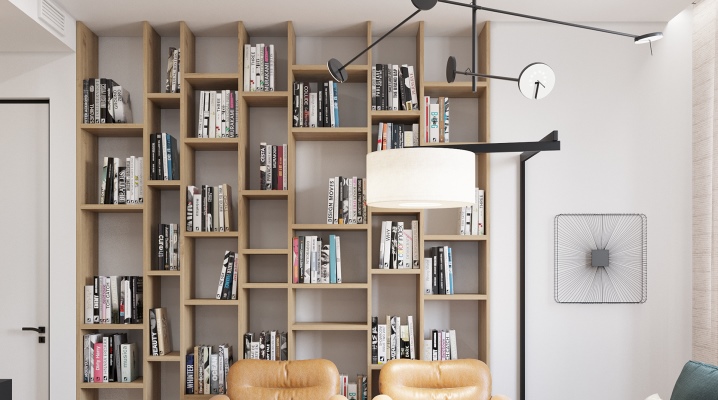
The need to store a large number of things is present not only in large warehouses - it is also relevant for homes. One of the most effective ways to organize space is a shelving unit that allows you to store many items in a limited space. At the same time, such furniture is produced from many types of different materials, but good old wood is still in high demand.
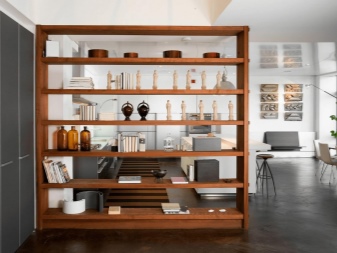
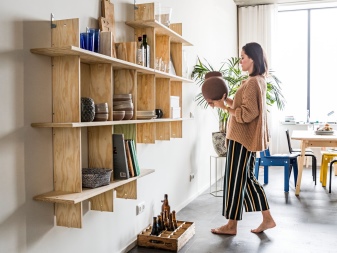
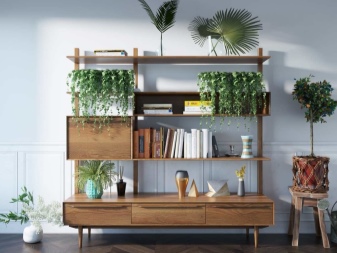
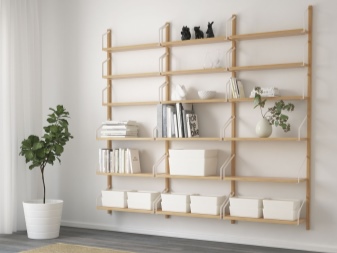
Peculiarities
To begin with, let's briefly say that the rack differs from an open cabinet in that it has nothing like the back wall.
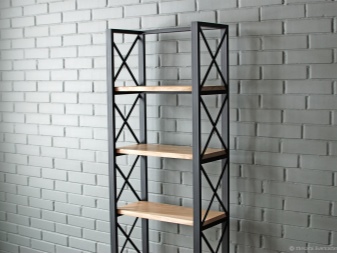
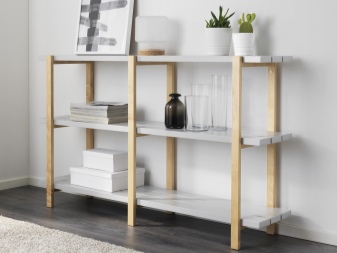
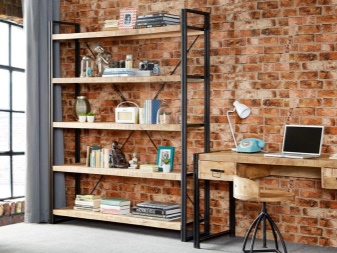
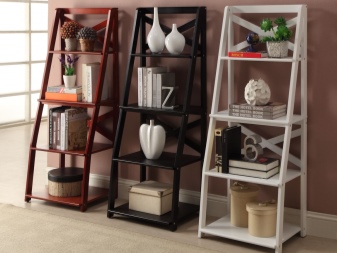
Due to this, the piece of furniture turns out to be lighter and cheaper, and if you also do not move it close to the wall, using it as a partition, then the space behind the rack will be visible through the gaps, so that the room will no longer seem cramped and cluttered with furniture. All these advantages are the reason why lightweight and compact racks are used everywhere.

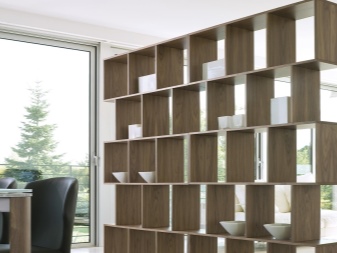
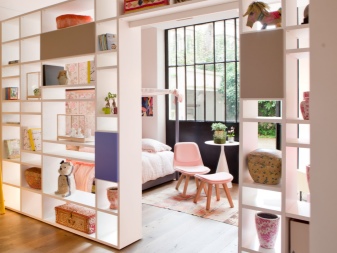

If you find fault, a wooden rack could not be called the best type of accessory, since natural material perfectly collects dust on itself and requires regular cleaning, and wood is also a fire hazardous material. In the end, wood is afraid of moisture and is interesting for pests, but consumers who choose wooden racks remember that there are much more advantages to such a solution. Here are just a few of them:
- a structure made of solid solid wood, with proper care, can serve the owners for decades - it can really be inherited;
- unlike plastic that is popular today, wood remains a natural material that, even with strong heating, does not emit toxic fumes and is unlikely to cause problems, even if it literally gets inside the human body;
- wooden shelves are able to withstand a total load of tens or even hundreds of kilograms - in most cases this is enough to completely cover all needs;
- wood fits perfectly into most styles, except for ultra-modern and futuristic, it creates an indescribable feeling of comfort and makes you feel at home;
- the material is quite easy to handle by hand, many men have the skills to work with it, so in some cases a wooden rack is chosen for the simple reason that it can even be homemade.
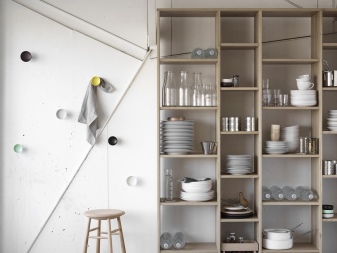
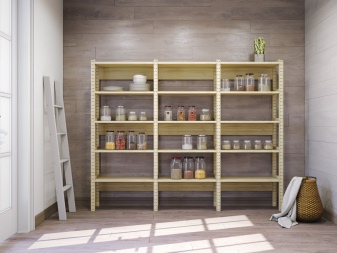
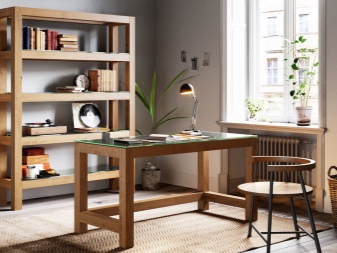

Views
Even if at the first mention of the rack you immediately clearly imagined such a household accessory, you need to understand that in fact, furniture of such a highly specialized type may be different depending on what specific needs a separate instance was created for. There are also quite a few classifications and criteria for them - we will just go through briefly the main potential areas to make it easier for you to choose such an accessory for your home or summer cottage.
- First of all, racks are universal or special. Universal ones are designed to store any items that fit in cells - this is the most common type of furniture, relevant literally everywhere. Special racks are designed for property with special needs - for example, you cannot put pipes or rolled metal into cells, so there are no partitions, but only consoles where it is convenient to load long products.
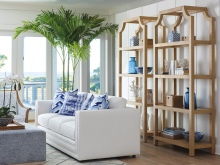

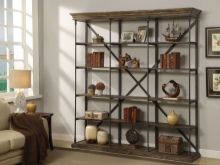
Again, the paws of the consoles will not necessarily be horizontal - sometimes they are deliberately made inclined so that the goods do not accumulate at the far wall, but roll out under their own weight as close to the aisle as possible. If the property is loose or consists of many small items (for example, hardware) that are not packaged in cans, it is important to use not an open, but a closed rack - with boxes or doors for each section.
Some models even have their own back wall, which actually turns them into an open cabinet.


- In most cases, racks are a fairly large floor structure, but there are also mobile, if not at all folding samples. They are very relevant in situations where it is desirable to regularly move furniture to optimize space more.
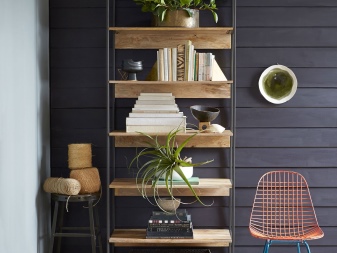
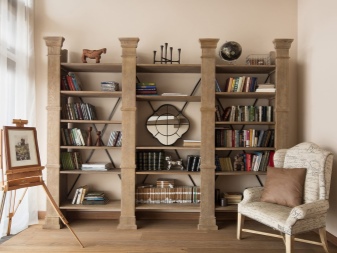

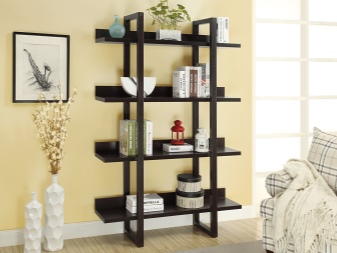
- Such accessories can also differ in shape - there are also strictly vertical, and triangular.
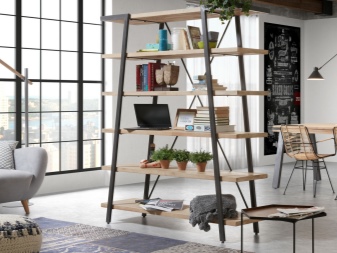
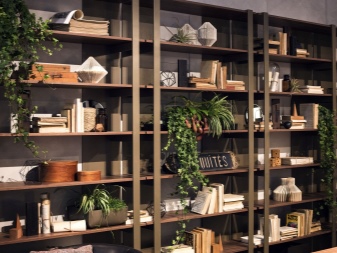
For easier handling of loads on shelves or consoles, shelving ladder - one that in itself implies the presence of steps for ascent and descent. Most often, such models have a huge weight and are securely attached to the floor so as not to tip over.
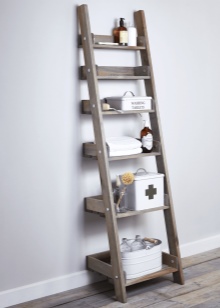
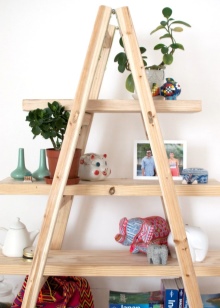
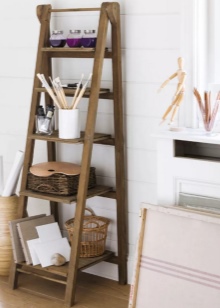
- Finally, there are both solid wood shelving, so and prefabricated... A frame made of wood, of course, can hardly be solid in the full sense of the word, but if its racks and shelves are connected by a conditionally non-separable connection, then we refer a specific specimen to a solid one. However, in some warehouses and enterprises, quick assembly and disassembly of warehouse equipment is important, therefore, racks are produced for them with parts that allow almost instantly and without the use of tools to change the configuration of the wooden frame, add and subtract sections up and to the sides.
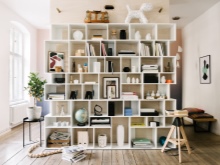
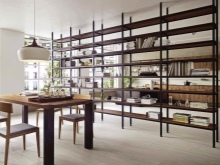
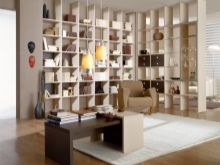
Materials (edit)
Regardless of whether you purchase a rack in a furniture store or want to make it yourself, one of the key selection criteria will be the determination of the main material from which the shelves are made. Of course, one should not ignore the assessment of both the fasteners and the rear wall, but metal hardware is generally unpretentious to service conditions and is quite capable of withstanding the load within that provided according to the instructions, and the rear wall usually simply does not bear any special load.
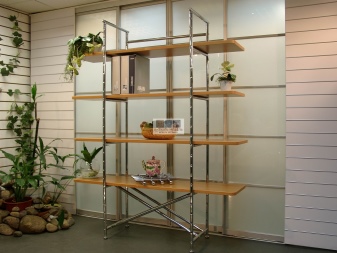
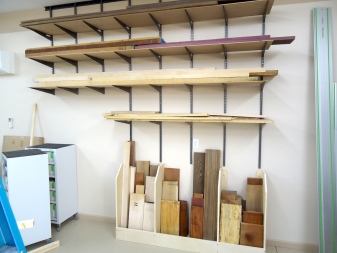
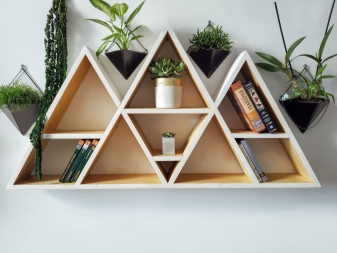
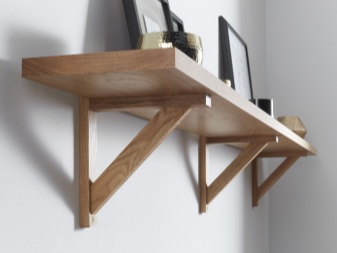
Before moving on to considering individual types of wood, it is important to clarify that boards come from different origins. Natural ones are called solid and in all cases are considered the best choice - they are characterized by impressive strength and durability, albeit at a certain high cost. MDF panels are a canvas pressed under high pressure - a rack made of such slats will not be so much inferior in quality to what is made of solid wood, and it will cost a little cheaper.
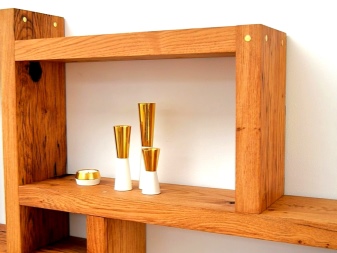
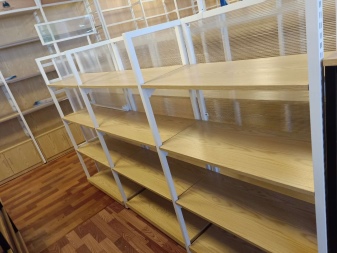
Plywood is already much less durable and is more likely to store paper, but chipboard, which is popular due to its very low cost, can literally be dangerous - during its production, the chips are glued together, not always caring about the environmental friendliness of the used glue.
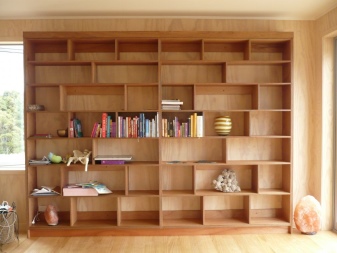
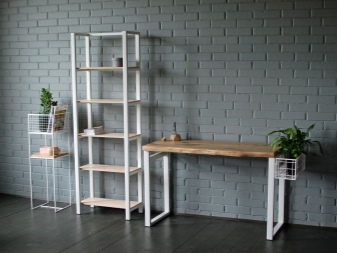
Pine
This coniferous tree is in great demand in our country due to its prevalence and, therefore, low price. The natural advantage of such a material is the natural resin impregnation, which protects the material from pests and partly from moisture. Pine boards smell amazing and look pretty beautiful, and their only drawback is their relative softness - you should definitely not drop heavy objects on such a shelf, otherwise it will not do without a dent.
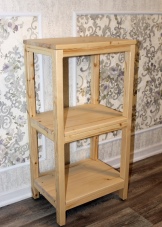
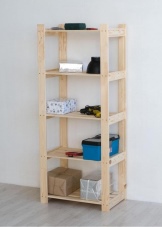
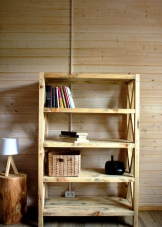
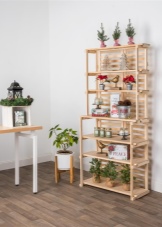
Oak
The most durable and expensive option. An oak rack is an acquisition for centuries: it is in all seriousness able to outlive its owner, without losing not only practicality, but also its aesthetic appearance. Oak shelves are capable of withstanding a huge load, and you can also simply brag about them, because such furniture costs decent money and once again emphasizes the status of the owner.
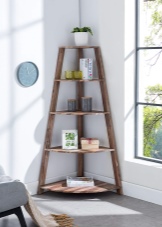
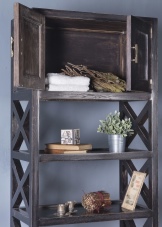
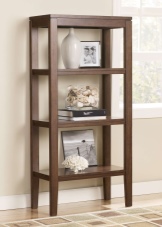
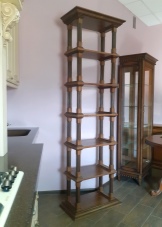
Beech
Beech boards in our country are known a little less than oak boards, but in most cases they are regarded as equal to them in all basic parameters. Such a tree is also distinguished by impressive prices, although it will certainly pay off due to the durability of the products made from it.
Again, such a rack can be safely loaded to the eyeballs - at least at home, it will be very difficult to overload it.


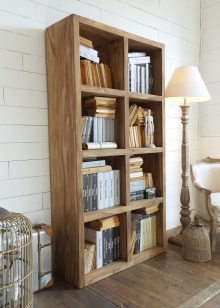
Birch
Birch raw materials for the production of furniture in our country are used quite often for the reason that birch trees in Russia are a dime a dozen, but here it is just here that you should show some caution when choosing a rack. On the one hand, this is still not the worst wood - despite its relative softness, it is suitable for the production of shelving under light load, and soft material is much easier to handle with your own hands. "Tricks" become obvious if birch furniture is used in conditions of high humidity - then the tree begins to rot rapidly, becomes a breeding ground for fungus, and can deform under load.
Theoretically, the issue is solved with the help of special impregnations, but objectively no one takes birch furniture to the bathhouse.

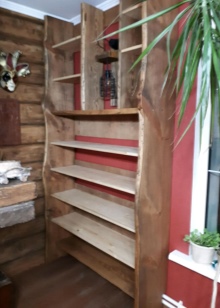

Larch
This type of material cannot be called too popular, but nevertheless it must be considered when choosing a full-fledged rack that will serve faithfully for many decades. Above, we have already considered why pine, as a coniferous species, is widely used in the furniture industry - so larch is also a coniferous tree, which is noticeably stronger. The downside, however, is that increased strength also means increased weight, but another drawback will be more fundamental - due to their oblique layers, it can be difficult to cut larch boards perfectly even.
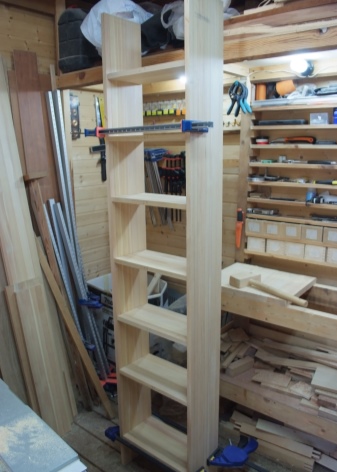
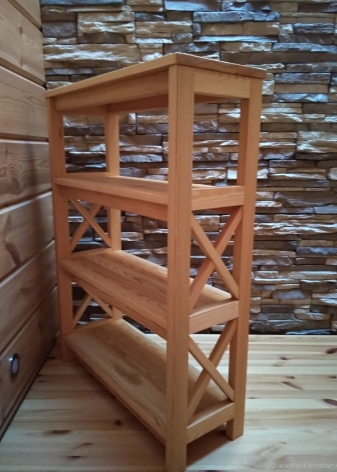
Dimensions (edit)
Determining the dimensions of the rack, you need to clearly answer the question of what purposes it is needed for. On the one hand, furniture should be small enough to fit into the space allotted for it, because racks are bought for this purpose, in order to store a lot of things with a small footprint. On the other hand, it is unacceptable to purchase that furniture accessory that is simply not able to cope with the task at hand and cannot store in its cells everything that interferes with you elsewhere.
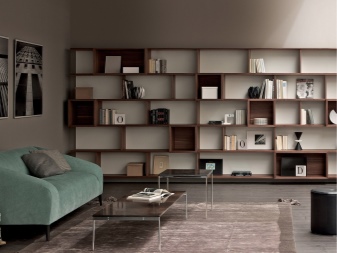
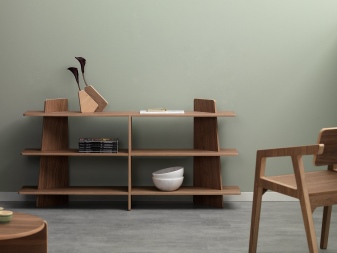
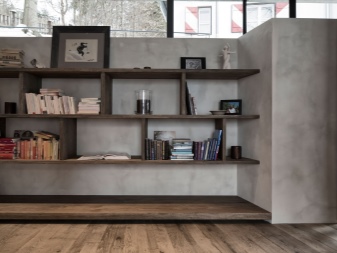
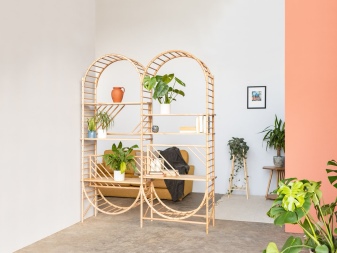
In pursuit of spaciousness, do not take an overly large rack - it turns out that it only takes up space in vain. An impressive width with far from being one hundred percent full is only appropriate if the product performs an integral function of a partition between rooms or zones, and a low rack, unlike a high one, can be squeezed into any door.
Again, when deciding on the dimensions, remember that it is important to pay attention not only to the dimensions of the frame, but also to the parameters of each individual cell. It will be a disaster for a cramped apartment if you buy a storage unit with shelves that will stand idle just because nothing can fit on them! In view of this, consider what size things are most likely to be stored.

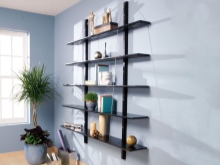

For storing motley property, it makes sense to choose wall racks with cells of different sizes - then they will productively accommodate TV, books, and home flowers.
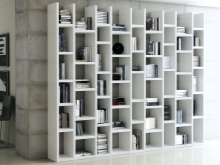
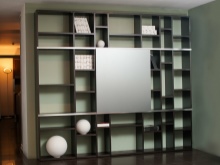
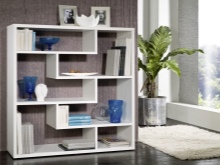
Design
Considering that we chose wood as the main material for the production of the shelving, it may seem that the color palette is limited, because wood products in most cases are not painted, leaving them a natural shade.In practice, it turns out that different types of wood differ fundamentally - for example, birch has a pronounced yellow color, and oak is much closer to the classic deep wenge on the verge of black. Precious mahogany also got its name for a reason, and craftsmen also use bleaching to obtain a white color and various methods to darken the shade.
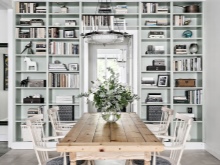


Note that light wood frames are appropriate for visually expanding tight spaces. - they almost always seem less expensive, but at the same time they are able to give a little more comfort.
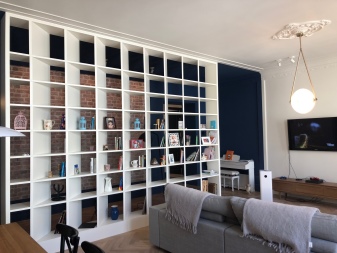
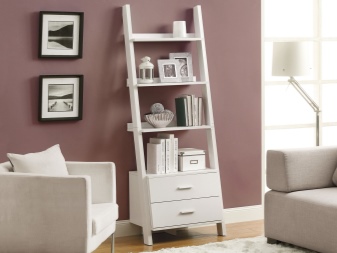
Dark wood seems to be more solid and expensive, it turns your room into a palace calm, where nothing has ever been saved, but such an interior can leave a slightly overwhelming impression.
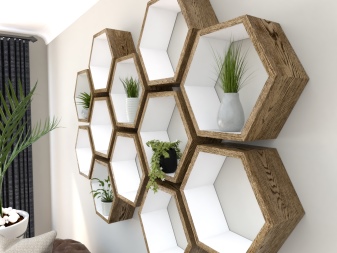
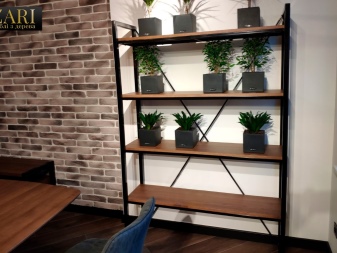
When deciding on a specific model for your own home, you also need to take into account the style of the interior.... For example, the loft and the Scandinavian style have always focused on the simplest design, but if the loft is characterized by some picturesqueness due to the visibility of "homemade" from the garden improvised material, then a tribute to Scandinavia is minimalism in its purest form, but certainly without saving on consumables. If you deliberately choose a stylish designer piece, then you need to understand that the rack should not be a black sheep among the rest of the furniture, which also matches the match. Any exquisite decorations, carvings and so on are already attributes of more expensive classical styles, and the whole room should be sustained in them.
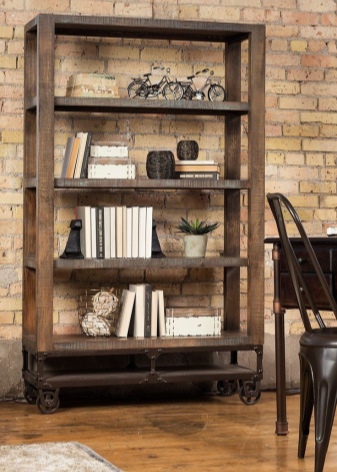

Appointments
It is in many ways necessary to decide on the appearance and design of the shelving with an orientation towards the purpose for which the furniture is purchased. Agree, in the dressing room, where all guests, without exception, get to, there should be something decent-looking, and, possibly, once again protecting clothes from dust accumulation and moth visits - that is, closed models are a priority. In the living room, they do exactly the opposite - the shelving here usually serves as an exhibition stand, so it must be open. What to exhibit in it - fruits, dishes, photographs or personal awards - it's up to you.
Traditionally, less attention is paid to the appearance of those shelves that are hidden from prying eyes somewhere in a barn, basement or closet.
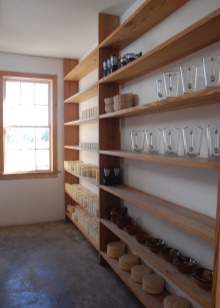
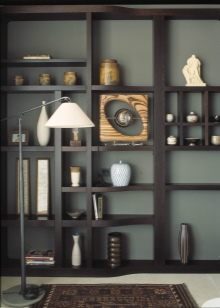

Practicality is most important here - furniture for food in the pantry should provide convenient access to each stored jar, the structure for linen should, first of all, be clean and closed in order to prevent getting dirty, but the storage for the tool should just be strong.
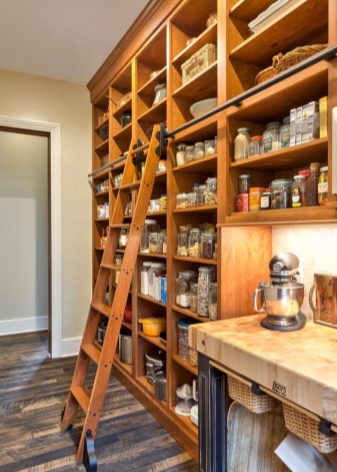
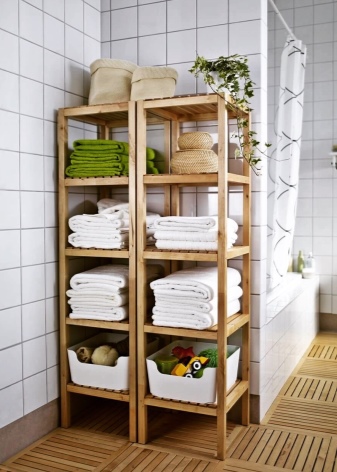
Beautiful examples in the interior
The rack in the first photo looks quite modern - the creators tried to make the racks so that they were striking at a minimum. It turns out that the shelves seem to be independent from each other - they practically float in the air, and with them the whole structure seems weightless.
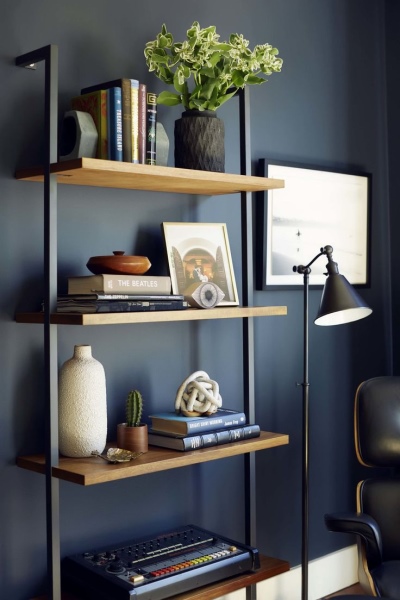
A second example is a classic wooden wall shelf as most people imagine it. The specific model is focused on typical library needs, because its cells are in the form of bookshelves, but the owners, as you can see, have found ways to store other things as well.
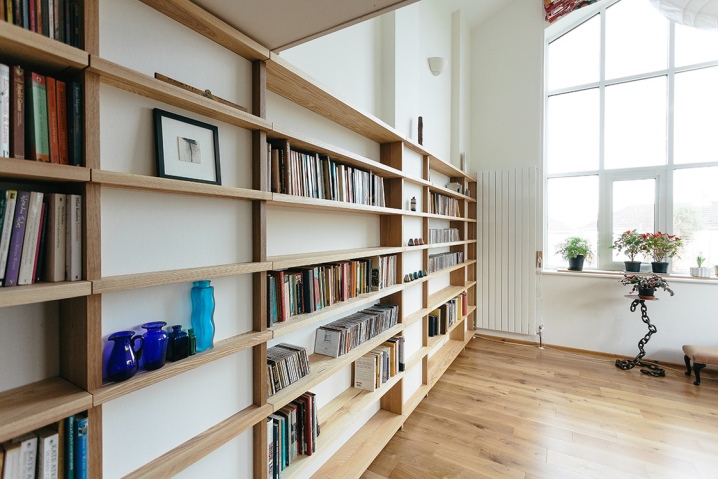
The third photo shows a typical shelving for the loft style - it does not seem to be assembled by hand, but it is very similar to old furniture taken as unnecessary somewhere in a laboratory or archive... Such aestheticism, of course, is not for everybody, but hardly anyone will say that such an approach has no right to exist.
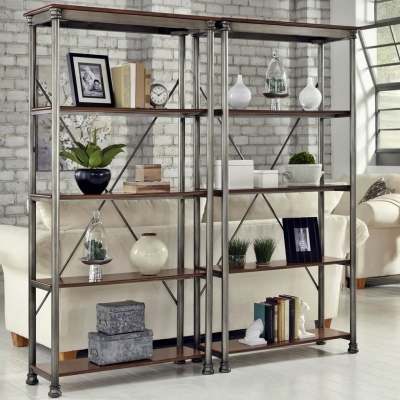
The last example is the clear opposite of a loft, which is a very cozy home furniture with a markedly large amount of used wood. The manufacturer did not pursue a rectangular frame in order to leave room for design maneuver.
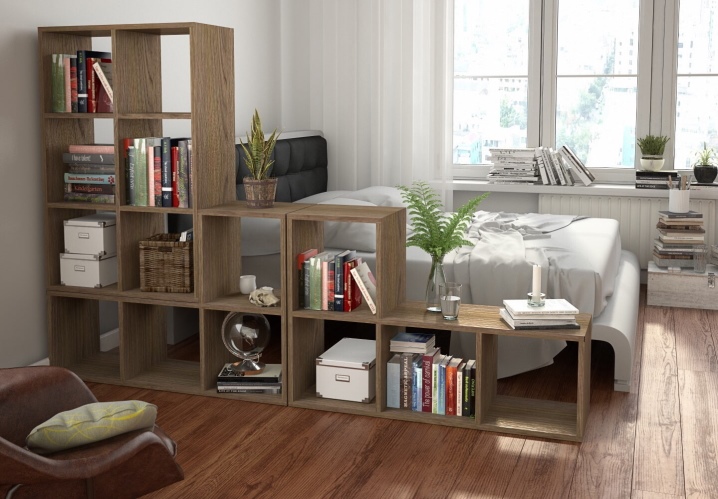













The comment was sent successfully.